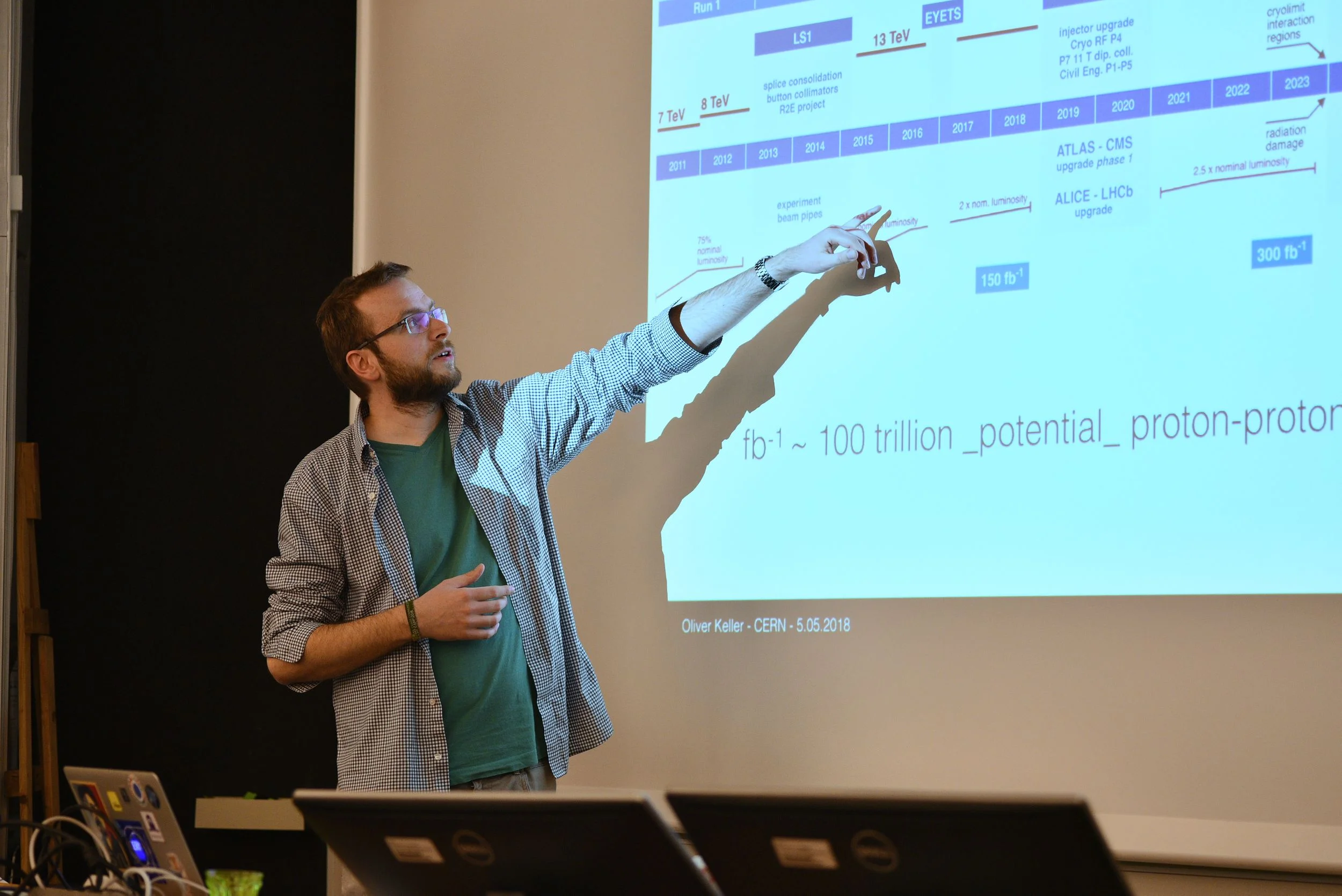High Energy Physics
As this year's focus of the YPF event lies upon particle physics, we will visit the world-famous European Organization for Nuclear Research, better known under its acronym CERN. Ever since its establishment in the 50s, scientists from all over the world have contributed to ground-breaking discoveries in the behaviour and properties of the most elementary particles matter consists of.
Perhaps the most prestigious accomplishment in recent years has been the verification of the existence of the Higgs boson in 2012, known for being responsible for elementary particles having a certain mass; on a physical side remark, it is important to note that the Higgs boson only is responsible for the mass of the particles, however not for complex bonds of atoms and molecules, where the most significant part of the mass stems from the binding energy.
This discovery has been made with the CMS and ATLAS detectors which are situated on the Large Hadron Collider (LHC).
CERN, LHC, and the LHCb experiment
by Prof. Olivier Schneider
CERN is an international organization created to foster scientific collaboration in particle physics between European states, and provide the necessary accelerator infrastructure. Its current flagship project, the Large Hadron Collider (LHC), is operating at the energy frontier. Together with ATLAS and CMS, the LHCb experiment is looking for new phenomena beyond the Standard Model of particle physics. To this effect it exploits the huge production of particles containing a heavy quark. A few examples of indirect searches for New Physics will be shown.









LHC and CMS experiments
by Dr. Maria Ratti
The Large Hadron Collider (LHC) is the most powerful accelerator ever built. By looking at the products of the LHC collisions in large and sophisticated detectors, such as the CMS experiment, it is possible to study in detail the fundamental building blocks of the sub-atomic world and to search for new physics phenomena, such as dark matter particles. I will give an introductory overview of how all this is done.








Lattice Quantum Chromodynamics
by Dr. Maxwell Hansen
The strong nuclear force is responsible for a rich variety of observed phenomena, from the masses, allowed isotopes and binding energies of nuclei to the detailed mechanisms of nucleosynthesis in stars. All this behavior is governed by the elegant mathematical framework of quantum chromodynamics (QCD), the theory quarks and gluons and their interactions. A particularly intriguing aspect of QCD physics is the nature and behavior of resonances, short lived states that decay via the strong force. In this talk I will discuss progress in studying these states by combining field theoretic ideas with large scale computer calculations. I will describe the path toward precision calculations of resonance properties in a model-independent approach called lattice QCD.









Pixel detectors
by Oliver Keller
Pixel detectors play an increasing role in high energy physics as particle energies and collision rates reach new records. This talk will give an overview on how they work, present different examples of pixel detectors at CERN and their importance in other fields like medical applications. A live demonstration using an augmented reality prototype called iPadPix will show how they can reveal even natural radioactivity from the environment.







Swiss Phyiscal Society, LHC and ATLAS experiment
by Prof. Hans Peter Beck
ATLAS is one of the four major experiments at the Large Hadron Collider (LHC) at CERN. It is a general-purpose particle physics experiment run by an international collaboration and, together with CMS, is designed to exploit the full discovery potential and the huge range of physics opportunities that the LHC provides.
ATLAS' scientific exploration uses precision measurement to push the frontiers of knowledge by seeking answers to fundamental questions such as: What are the basic building blocks of matter? What are the fundamental forces of nature? Could there be a greater underlying symmetry to our universe?
ATLAS physicists test the predictions of the Standard Model, which encapsulates our current understanding of what the building blocks of matter are and how they interact. These studies can lead to ground-breaking discoveries, such as that of the Higgs boson, physics beyond the Standard Model and the development of new theories to better describe our universe.
The years ahead will be exciting as ATLAS takes experimental physics into unexplored territories – maybe with new processes and particles that could change our understanding of energy and matter.










